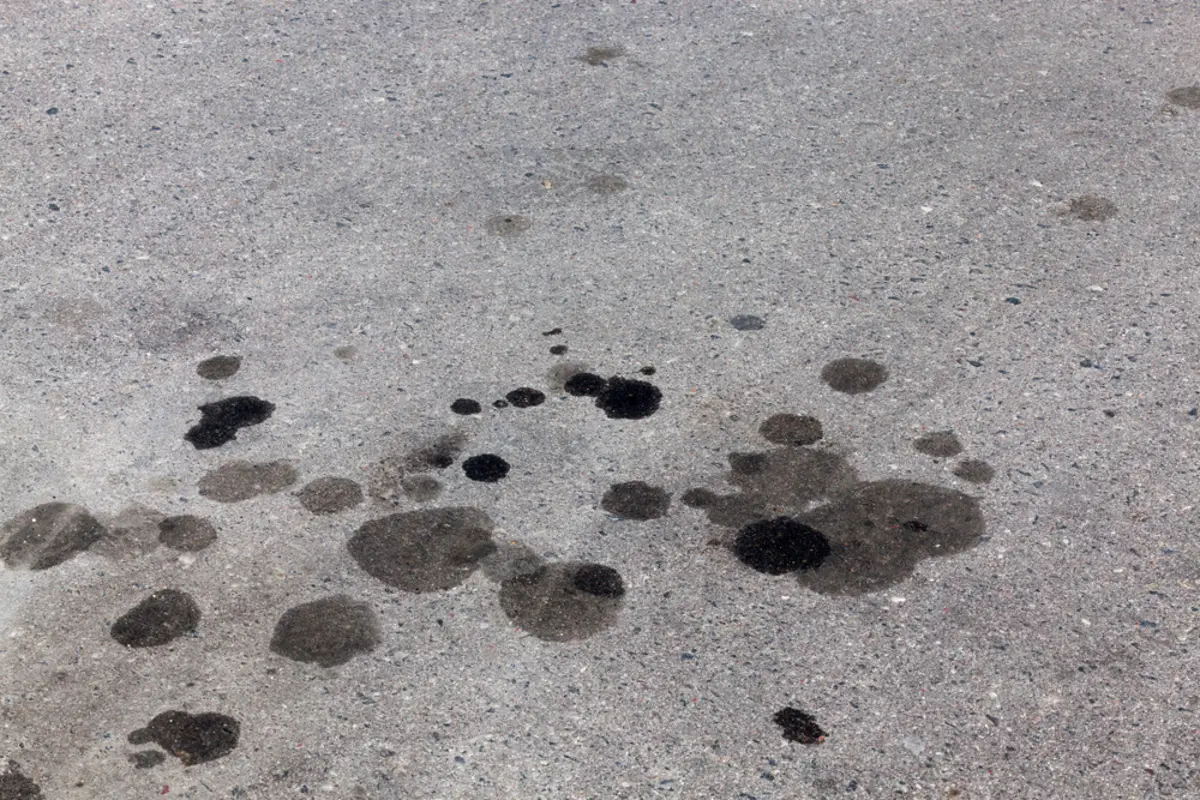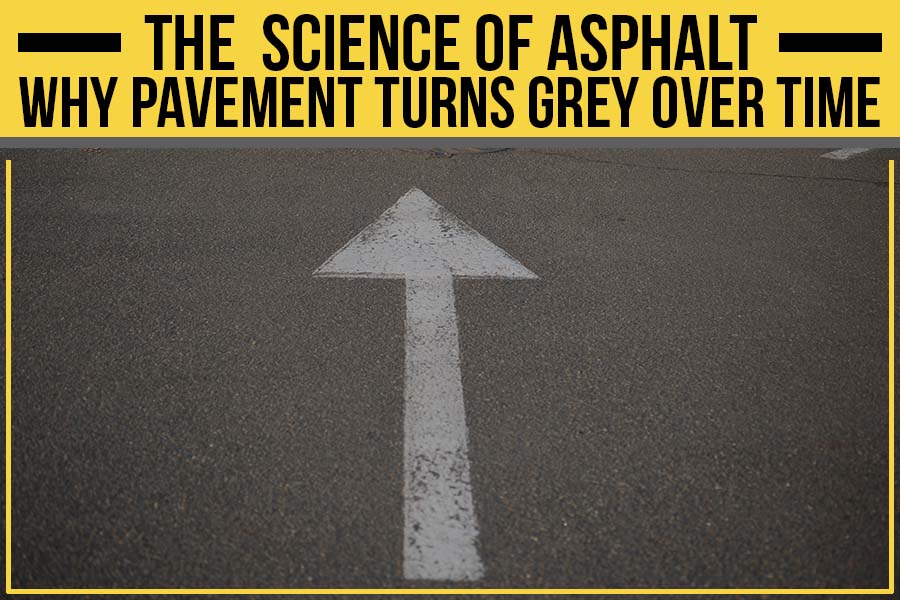Key Takeaways:
- The sun’s ultraviolet (UV) rays break down the asphalt binders, causing them to become brittle and lose flexibility.
- Over time, the UV rays also cause the asphalt binder to oxidize or turn from black to brown or light brown.
- As the pavement crumbles, the aggregate is exposed to the elements, which causes it to become weathered and grey.
- Another reason why asphalt pavement turns grey over time is due to vehicle traffic.
- Carolina Asphalt offers concrete & asphalt paving and sealcoating services to customers across North Carolina & South Carolina.
It’s a common site in any town or city – the roads and sidewalks turn grey as they age. But what causes this process, and why does it happen? Carolina Asphalt will look at the science of asphalt pavement and explore why it turns grey over time.
10 Reasons Why Pavement Turns Grey Over Time
1. Oxidation
One of the primary reasons why asphalt pavement turns grey over time is oxidation. A chemical reaction occurs when the asphalt is exposed to oxygen, which causes the asphalt to harden and turn grey. This process accelerates with exposure to sunlight and other environmental factors.
2. Moisture Damage
Moisture can cause the asphalt to deteriorate and turn grey. Water causes the asphalt to soften, making it more susceptible to damage from traffic and weathering. If left untreated, it can lead to cracking and potholes. Proper grading and drainage of the area around the asphalt can help protect it from damage due to moisture.
3. Traffic Damage
Asphalt pavement can also turn grey over time due to traffic damage. Heavy traffic can cause the asphalt to wear down, making it more susceptible to oxidation and moisture damage. Additionally, vehicle tire marks can also cause the asphalt to turn grey.
4. Weathering
Weathering is another common cause of grey asphalt pavement. Weathering occurs when the sun, wind, and snow or rain break down the asphalt over time. This process can cause the surface of the asphalt to become dull and grey.
5. Oil Spills
Oil spills stain the surface of the asphalt, making it more susceptible to staining from dirt and other materials. Oil spills can also accelerate the oxidation process, causing the asphalt to harden and turn grey quicker than it would otherwise. If an oil spill is not cleaned up quickly, it can also cause cracking and crumbling of the asphalt due to heat absorption. Asphalt exposed to oil should be resealed with a sealant or protective coating to protect it from further damage.
6. Dirt Buildup
Dirt buildup is another common reason for grey asphalt pavement. Dirt will accumulate on the surface of the asphalt over time, making it more difficult for sunlight to penetrate the underlying pavement. Additionally, dirt buildup can absorb heat from the sun, further accelerating the oxidation process.
7. Tire Marks
Tire marks are another common cause of grey asphalt pavement. Tire marks occur when tires leave behind deposits of rubber on the pavement. These deposits can be challenging to remove and will eventually cause the asphalt to turn grey.
8. Salting
Salt is often sprinkled to liquefy ice and snow on roads and sidewalks. However, salt can also damage asphalt pavement, causing it to turn grey over time. Salt can deteriorate the asphalt surface, leading to the growth of mold and mildew.
9. Chemicals
Certain chemicals can also cause asphalt pavement to turn grey over time. Chemicals such as gasoline, oil, and antifreeze can all damage the asphalt, causing it to harden and turn grey.
10. Pollution
Pollution from cars and factories can also cause asphalt pavement to turn grey over time. Pollutants such as smog and carbon monoxide can damage the asphalt, causing it to harden and turn grey. Pollution can also cause mold and mildew to grow on the pavement.
Click here to predict your pavement’s future.

Tips to Prevent Your Asphalt Pavement from Greying
1. Routine Maintenance
Routine maintenance is the best way to prevent your asphalt pavement from greying. It includes regularly sweeping and cleaning the pavement and filling any cracks or holes that may develop. Additionally, you should have your pavement sealcoated every two to three years to help protect it from the elements.
2. Sealcoating
The best way to prevent your asphalt pavement from greying is to sealcoat it regularly. Asphalt sealcoating is a process in which a protective layer of sealant is applied to the pavement’s surface. This layer helps protect the pavement from the sun’s UV rays and other elements that can cause it to break down over time. You should seal coat the asphalt surfaces every two to three years to prevent greying.
3. Avoid Spills
Another way to prevent your asphalt pavement from greying is to avoid spills. Spills can cause the asphalt to become stained, which can be challenging to remove. Clean it up if a spill occurs using a mild soap and water solution.
4. Use the Right Cleaning Products
When cleaning your asphalt pavement, use the right products. Harsh chemicals can damage the asphalt and cause it to grey prematurely. Instead, use mild soap with water or a special-purpose asphalt cleaner.
5. Protect Against the Elements
Asphalt pavements are also susceptible to damage from the sun and rain. Consider installing awnings or umbrellas to help protect your pavement from these elements.
Additionally, your pavement can be seal coated every two to three years for added protection.
6. Repair Damage Promptly
If your asphalt pavement does become damaged, it is essential to repair it promptly. Allowing damage to go unaddressed can lead to further damage and premature greying of the pavement. Fill any cracks or holes that develop and have any larger areas repaired by a professional paving contractor.
Also, read our blog on the difference between crack sealing and slurry sealing.
Need Concrete & Asphalt Paving or Sealcoating Services in North Carolina or South Carolina?
Carolina Asphalt is licensed and insured to practice across North & South Carolina. We proudly serve Charleston, Raleigh, Greenville, Columbia, Charlotte, & everywhere in between! Carolina Asphalt has you covered if you need to restripe an existing parking lot, lay out a new pavement, seal coat your pavement, or fix cracks in the Carolinas!
We will put our years of experience to work for you and give your property the fresh look it deserves. Contact us today for a free estimate!




